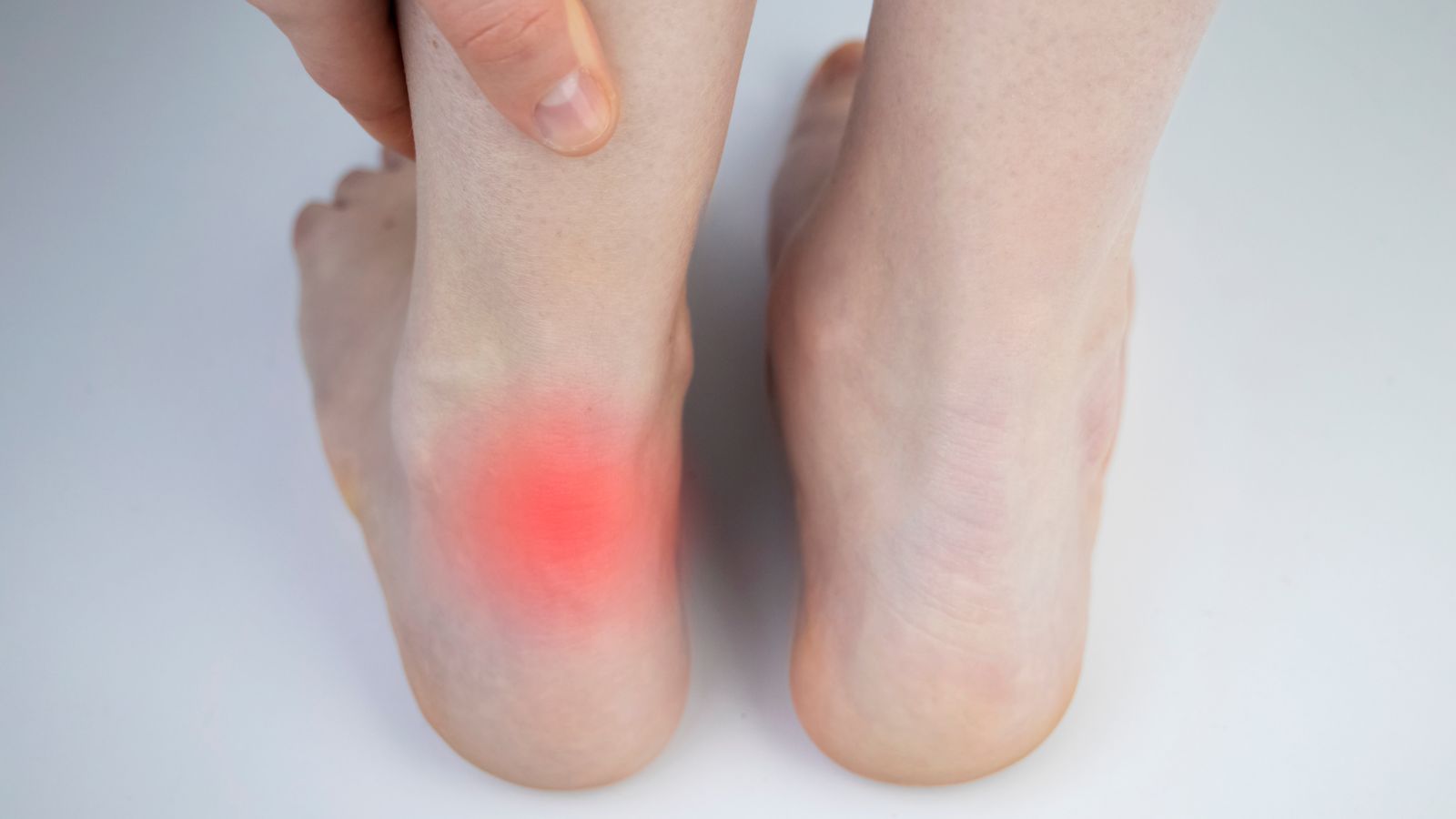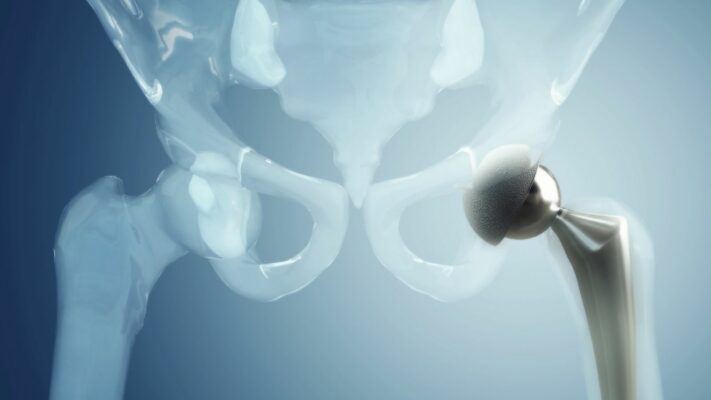Prof. Dr. Murat Demirel, one of the best orthopedic doctors performing Achilles tendon surgery in Ankara, stands out with his many years of experience in treating tendon ruptures and tears caused by sports injuries, sudden strain, or trauma. The Achilles tendon is the strongest tendon that connects the calf muscles to the heel bone, and its injury severely affects the ability to walk. Among the hospitals performing Achilles tendon surgery in Ankara, Prof. Dr. Demirel applies personalized surgical plans for his patients in centers equipped with advanced medical technology and high hygiene standards.
Before surgery, Prof. Dr. Demirel determines the extent of the damage with a detailed examination and imaging methods and closely follows his patients after surgery. With the doctor’s recommendations after Achilles tendon surgery, the recovery process is ensured to be fast, safe, and permanent. In addition, by providing transparent and up-to-date information about Achilles tendon surgery prices in Ankara, he helps his patients make informed decisions. You can also make an appointment immediately to regain your mobility, reduce your pain, and step into a healthy life.
| Disease Name | Achilles Tendon Rupture |
| Affected Area | Achilles tendon (the structure that connects the calf muscles to the heel bone) |
| Main Causes | Sudden strain, sudden change of direction, direct trauma, insufficient warm-up, muscle-tendon imbalance |
| Symptoms | Sudden and severe pain at the back of the heel, a feeling of “popping sound,” difficulty walking, inability to stand on tiptoe |
| Risk Factors | Men between the ages of 30–50, sudden exercise in individuals who do not exercise regularly, chronic tendon degeneration, certain antibiotics (e.g., quinolones) |
| Diagnostic Methods | Physical examination (Thompson test), ultrasonography, magnetic resonance imaging (MRI) |
| Treatment Methods | Conservative (immobilization with functional orthosis) or surgical (open or minimally invasive tendon repair) |
| Surgical Necessity | Often preferred for active individuals or athletes; to reduce the risk of recurrence and to regain function quickly |
| Physiotherapy Requirement | Strongly recommended; necessary to regain muscle strength, flexibility, and functional recovery |
| Possible Complications | Recurrence, wound infection (post-surgery), nerve injury, muscle weakness, heel pain |
| Recovery Process | 3–6 months; return to sports activities may take 6 months or longer |
| Follow-Up Requirement | Regular monitoring during clinical check-ups and physiotherapy process is required |


Prof. Dr. Murat Demirel
Orthopedics and Traumatology Specialist
Orthopedics Specialist Prof. Dr. Murat Demirel was born in Ankara in 1974. He completed his primary education at Ankara Kavaklıdere Primary School and his secondary and high school education at Ankara Atatürk Anatolian High School. Dr. Demirel graduated from Ankara University Faculty of Medicine in 1998 and completed his residency in Orthopedics and Traumatology at Ankara Numune Training and Research Hospital, 1st Orthopedics and Traumatology Clinic, in 2004.
PhD
Ankara University Institute of Health Sciences
Specialization
Ankara Numune Training and Research Hospital, 1st Orthopedics Clinic
Medical School
Ankara University Faculty of Medicine
Yazı İçeriği
What is an Achilles tendon rupture?
The Achilles tendon, the largest and strongest tendon in our body, is a bridge that transmits the power of the muscles at the back of our calf to our heel. Think of it like this: when you press the gas pedal of your car, there is a mechanism that transmits the engine’s power to the wheels; similarly, the Achilles tendon is a “power transmission” system that pushes your foot downward when your calf muscles contract and moves your body forward. It is this tendon that carries your entire body weight when you rise on your toes. Despite being so strong, unfortunately, it can tear when exposed to sudden and excessive tension.
This tear means the integrity of the tendon fibers is disrupted. It can present in two different ways:
Partial Tear: Part of the tendon is damaged, but its integrity is not lost. You can think of it as some strands of a rope snapping but the main body still holding together. This situation is less common.
Complete Rupture: The tendon is completely torn into two. The connection between the calf muscle and the heel bone is completely severed. This is a much more common situation that seriously affects mobility.
What causes an Achilles tendon rupture and who is at risk?
An Achilles tendon rupture usually occurs with a sudden movement that exceeds the tendon’s durability limit. Most of the time, our patients remember the moment of injury very clearly; while jumping to the basket, sprinting to kick a ball, or suddenly changing direction on the court… In these moments, the tendon is exposed to enormous force in a short time and tears as it cannot withstand this sudden load.
However, this condition does not only happen to professional athletes. There is a profile we call the “weekend warrior,” which constitutes the most typical risk group for Achilles tendon rupture. These individuals usually work at a desk job during the week and remain inactive, but when the weekend comes, they participate in intense activities such as football matches or tennis without preparation. This sudden and intense strain, which the body and tendon are not accustomed to, unfortunately invites ruptures.
The main situations and factors that pose a risk for Achilles tendon rupture can be listed as follows:
- Sports that require sudden acceleration, stopping, and jumping.
- Falling down stairs or jumping from a height.
- Stepping into a hole unnoticed.
- Being between the ages of 30–50.
- Male gender (more common compared to females).
- Irregular and unprepared sports activity.
- Insufficient or no warm-up before activity.
- Use of certain medications that weaken tendon structure.
- Previous cortisone injections around the tendon.
- Systemic diseases such as diabetes.
- Rheumatic conditions such as rheumatoid arthritis.
- Obesity.
- History of previous Achilles tendinitis (tendon inflammation).
What are the symptoms of an Achilles tendon rupture?
The symptoms of an Achilles tendon rupture are usually very sudden, clear, and dramatic. Patients never forget that moment. If you experience such a situation, you will likely feel one or more of the symptoms below.
The most common and typical symptoms are as follows:
- Sudden and sharp pain in the lower back part of the calf.
- A clear “pop,” “snap,” or “tear” sound heard at the moment of injury.
- A feeling as if someone kicked, struck with a stick, or threw a stone at the back of the calf.
- Severe difficulty bearing weight and walking on the injured leg.
- Walking with a limp or inability to walk.
- Rapid swelling developing in the injured area.
- Bruising appearing within a few hours or days, spreading from the heel to the calf.
- Inability to perform tiptoe rising movement.
- A palpable gap or depression felt during manual examination where the tendon normally is.
This “kicked feeling” is so characteristic that many patients turn around to see who hit them. What actually happens is the suddenly ruptured tendon loosening and hitting the surrounding tissues. The initial severe pain may ease after a while, but this should not be misleading. The important issue is the loss of function. If you cannot stand on your toes, this is a very strong sign of an Achilles tendon rupture, and you should seek medical attention without delay.
Contact us for detailed information and an appointment!
How is an Achilles tendon rupture diagnosed?
When you come to the clinic with a suspected Achilles tendon rupture, the diagnostic process is usually quite simple and largely depends on the physical examination performed by an experienced physician. The process consists of several steps.
First, we listen to you carefully. Learning in detail how the injury happened, what you felt at that moment, whether you heard a sound, and your current complaints is the first and most important step in diagnosis. Answers to questions such as whether it happened during sports, during a daily activity, or if you had pain before will guide us.
Then we move on to the physical examination. This examination is the gold standard in diagnosing an Achilles tendon rupture. By comparing both legs, we observe swelling, bruising, and any deformity in the injured area. One of the most important findings is a gap that can be felt manually at the rupture site, usually 2–6 cm above the heel. However, the intense swelling that occurs immediately after the injury may mask this gap.
The key point of the physical examination is the “Thompson Test.” This test is a simple and highly reliable maneuver that almost confirms the diagnosis.
What does the Thompson test mean in diagnosing Achilles tendon rupture?
The Thompson test, also known as the calf squeeze test, is performed to determine whether the Achilles tendon is intact. The logic of the test is very simple: it checks whether the connection between the calf muscle and the heel bone is functioning.
The test is performed as follows: You lie face down on the examination table, with your feet hanging freely off the edge. The doctor gently squeezes your calf muscle, grasping the fleshy part with both hands.
If the Test is Negative (Tendon Intact): When the calf muscle is squeezed, the force is transmitted to the heel via the Achilles tendon, and your foot automatically bends downward (as if pressing a gas pedal). This is the expected normal reflex.
If the Test is Positive (Tendon Ruptured): No matter how much the calf muscle is squeezed, since the connection is severed, this force cannot reach the heel. As a result, there is either no movement in your foot at all or only a very weak, ineffective twitch.
The immobility of the foot in this way indicates that the Thompson test is positive and largely confirms the diagnosis of an Achilles tendon rupture. The simplicity and high accuracy of the test make it indispensable in diagnosing this injury.
Why is imaging required in diagnosing an Achilles tendon rupture?
Although physical examination is usually sufficient for diagnosis, in some cases we use imaging methods to confirm the diagnosis, obtain more detailed information about the rupture, and plan the treatment in the most accurate way. Think of imaging as creating a roadmap.
The most commonly used imaging methods are as follows:
Ultrasound (USG): A practical, fast, and cost-effective method. With sound waves, we obtain a dynamic image of the tendon. That is, by slightly moving your foot during the examination, we can observe how the tendon behaves in real time. Ultrasound clearly shows whether the rupture is complete or partial and how much distance there is between the tendon ends.
Magnetic Resonance Imaging (MRI): MRI provides the most detailed picture of the tendon and all surrounding soft tissues. It gives us very valuable information about the internal structure and quality of the tendon, and whether there is another associated degeneration (tendinosis). Especially when the diagnosis is not clear, when a chronic (delayed) rupture is suspected, or when a complex surgery is planned, MRI may be preferred.
X-rays do not directly show the tendon. However, they can be useful in detecting rare cases where the tendon tears off with a piece of bone from where it attaches to the heel bone (avulsion fracture).
What are the treatment options for an Achilles tendon rupture?
There are basically two main treatment paths for an Achilles tendon rupture: non-surgical (conservative) treatment and surgical treatment. The choice is not determined by a “one size fits all” approach. This decision is a completely personalized choice made by considering many factors together, such as your age, activity level, occupation, general health status, how much time has passed since the rupture, and most importantly, your expectations.
In the past, surgical treatment was almost automatically recommended for young and active patients, but with the development of modern rehabilitation protocols, this approach has changed. We now know that with correct patient selection and a very good physiotherapy program, non-surgical methods can also achieve results close to, and sometimes equal to, surgery. Our goal in treatment is to restore tendon function in the best way and to return you to your daily life and the activities you love as quickly and safely as possible. For this reason, we discuss the advantages and disadvantages of both options in detail with you and make a joint decision.
How is an Achilles tendon rupture treated without surgery?
Non-surgical treatment is based on the principle of providing the tendon with the right environment and time to heal itself without making a surgical incision. This method is generally preferred primarily in our older patients, those with low physical activity expectations, or those at high surgical risk due to conditions such as diabetes or heart disease.
The non-surgical treatment process consists of several basic steps:
Rest and Cold Application: From the moment of injury, it is important to use crutches to avoid putting weight on the leg and to apply ice regularly to control swelling.
Immobilization (Stabilization): This is the most critical part of the treatment. To ensure that the torn tendon ends approach and heal, the leg is stabilized in a special position. For this stabilization, plaster or more modern adjustable walking boots (orthoses) are used.
Positioning: At the beginning of treatment, the foot is held in a downward bent position (equinus position) to completely eliminate tension on the tendon.
Gradual Weight Bearing: While in plaster or boot, the foot position is gradually adjusted to a more neutral position as weeks progress, and controlled weight bearing is gradually allowed.
Physiotherapy: After the immobilization period is completed, the most important stage of treatment begins: a comprehensive physiotherapy and rehabilitation program.
The greatest advantage of this method is the complete avoidance of the potential risks of surgery (infection, wound problems, anesthesia risks). However, disadvantages include that the recovery process may sometimes take longer and that the risk of re-rupture is slightly higher compared to surgery. But it should be emphasized that modern and aggressive rehabilitation programs have significantly reduced these risks.
When and how is surgery performed for an Achilles tendon rupture?
Surgical treatment aims to bring the torn tendon ends anatomically back together and repair them with strong stitches. This method is often preferred in people who want the tendon to heal stronger and aim for an earlier and safer return to sports.
We usually consider surgery in the following situations:
- Young and active individuals.
- Those who play sports professionally or competitively.
- Cases where weeks or months have passed since the injury (chronic/delayed cases).
- Those who experienced re-rupture after previous non-surgical treatment.
- Cases where the tendon ruptured along with a piece of bone.
- Those who work in heavy labor and need leg strength.
- We have different techniques we use for surgical repair.
Open Surgery: In this traditional method, an incision of about 6–10 cm is made over the tendon to directly access the torn ends. After cleaning the damaged tissues, we stitch the tendon ends together using special and very strong stitching techniques (such as Krackow, Bunnell).
Minimally Invasive (Closed) Surgery: In this modern approach, instead of a large incision, the repair is performed using special instruments through several small 1–2 cm incisions made over the tendon. The biggest advantage of this technique is that it minimizes wound infection and healing problems, provides better cosmetic results, and sometimes offers faster recovery.
The choice of surgical technique depends on the type of rupture, how much time has passed, and the surgeon’s experience. The post-surgery process involves a period of immobilization followed by an intensive physiotherapy program, similar to non-surgical treatment.
How does recovery and rehabilitation progress after an Achilles tendon rupture?
The success of Achilles tendon rupture treatment depends as much, if not more, on the quality of the rehabilitation program that follows as on the chosen treatment method. Rehabilitation is not a passive waiting process but an active and planned journey of recovery where the patient, doctor, and physiotherapist work together as a team. While allowing for the biological healing of the tendon, this process aims to restore functions gradually and safely.
The rehabilitation process is usually divided into specific stages, each with its own goals:
Stage 1: Maximum Protection Phase (Usually the first 0–6 weeks)
The sole priority in this first period is to protect the healing tendon.
- Control of pain and swelling.
- Eliminating tension on the tendon.
- Ensuring wound healing if surgery was performed.
During this period, the leg is placed in a special boot or cast, no weight is placed on it, and crutches are used. Applying ice at home and keeping the leg elevated is very important.
Stage 2: Protected Movement and Early Strengthening Phase (Usually 6–12 weeks)
- Now it is time to gradually “reassure” the tendon and start to awaken it.
- Gradual removal from the boot or cast.
- Controlled weight bearing on the leg.
- Gently regaining ankle range of motion.
- Simple isometric exercises to keep muscles active.
In this stage, exercises begin with the help of a physiotherapist. Pool exercises are an excellent option at this stage, as water reduces the effect of gravity.
Stage 3: Advanced Strengthening and Functional Return Phase (Usually 3–6 months)
- The goal now is to regain lost strength and endurance.
- Increasing the intensity of calf-strengthening exercises (e.g., heel raises).
- Starting balance and coordination (proprioception) exercises.
- Regaining normal walking mechanics.
- Low-impact cardio exercises such as stationary biking.
Stage 4: Return to Sports Phase (Usually after 6 months)
- This final stage is the most exciting but also the most cautious period, especially for athletes.
- Starting a gradual running program.
- Transitioning to sport-specific movements such as jumping, hopping, and sudden direction changes.
- Developing strategies to minimize the risk of re-injury.
Throughout this process, patience is the key. Healing is a biological process and cannot be rushed. Respecting pain limits at every stage and strictly following the program set by your physiotherapist are essential for a successful outcome.
Does life return to normal after an Achilles tendon rupture?
This is the most frequently asked question by our patients. The answer is clearly yes. Although an Achilles tendon rupture is a serious injury, thanks to today’s modern treatment and rehabilitation approaches, the vast majority of patients can return to their pre-injury lives and activity levels.
Once the recovery process is complete, you will be able to carry out daily life activities (walking, climbing stairs, driving) without problems. Most of our patients can return to hobbies such as swimming, cycling, walking, and even recreational football matches.
However, it is important to keep expectations realistic, especially for competitive athletes. Full functional recovery and reaching pre-injury performance levels may take 1 year or sometimes longer. No matter how successful the treatment, a residual weakness of about 5–10% in the calf muscle strength of the injured leg compared to the healthy leg is not uncommon. This usually does not affect daily life but may cause a slight performance difference for elite athletes. Therefore, continuing long-term, sport-specific strengthening and conditioning programs during the return-to-sports process is very important.
Contact us for detailed information and an appointment!
Frequently Asked Questions
What is an Achilles tendon rupture and how does it occur?
An Achilles tendon rupture is a complete or partial tear of the Achilles tendon, the thickest tendon in the body that connects the calf muscles to the heel bone, as a result of sudden and severe strain. It usually occurs during sudden jumping, running, falling, landing from a height, or forced push-off during sports.
What are the symptoms of an Achilles tendon rupture?
At the moment of rupture, sudden and severe pain occurs in the lower calf along with a sensation of “popping” or “snapping.” Difficulty standing up, trouble walking, inability to rise on tiptoe, tenderness in the heel area, and sometimes swelling can be seen. A gap can often be felt at the rupture site of the tendon.
How is an Achilles tendon rupture diagnosed?
Diagnosis is usually made through physical examination and the patient’s history. Specific examination tests such as the Thompson test are used to evaluate the rupture. Ultrasound or magnetic resonance (MR) imaging is used if needed to confirm the diagnosis.
What are the treatment options for an Achilles tendon rupture?
Treatment is determined based on the patient’s age, activity level, and rupture location. Surgical treatment is usually preferred for young and active individuals. In non-surgical (conservative) treatment, tendon ends are brought together with a cast or walking boot. In both methods, intensive rehabilitation and physiotherapy are required afterward.
What is the recovery process after surgical treatment?
After surgery, the leg is kept in a cast or boot for 6–8 weeks, followed by physiotherapy. Generally, daily activities can be resumed in 3–4 months, while full strength and return to sports usually require 6–12 months. The recovery process varies depending on age, compliance with treatment, and muscle strength.
Can an Achilles tendon rupture heal without surgery?
Non-surgical treatment can be applied in partial tears and in elderly or less active patients. However, in complete ruptures, non-surgical treatment in young and active patients carries a higher risk of re-rupture and strength loss. The treatment method must always be determined by a doctor.
Can an Achilles tendon rupture recur?
The risk of recurrence is low after proper treatment and rehabilitation. However, re-rupture risk may increase if weight is placed too early, exercises are neglected, or tendon weakness develops.
What can be done to prevent an Achilles tendon rupture?
Performing adequate warm-up and stretching exercises before sports, avoiding sudden movements and overloading, using appropriate footwear, and regularly strengthening the calf muscles are effective in preventing Achilles tendon injuries.
What happens if it is not treated?
If left untreated, Achilles tendon ruptures can permanently impair walking function, result in the loss of the ability to rise on tiptoe, and cause weakness in the foot. In addition, chronic heel pain and balance problems may develop.
Is it possible to return to sports after an Achilles tendon rupture?
Most patients can return to sports after successful treatment and physiotherapy. However, the timeline varies by individual and usually takes 6–12 months. Doctor’s approval must be obtained before resuming sports.




